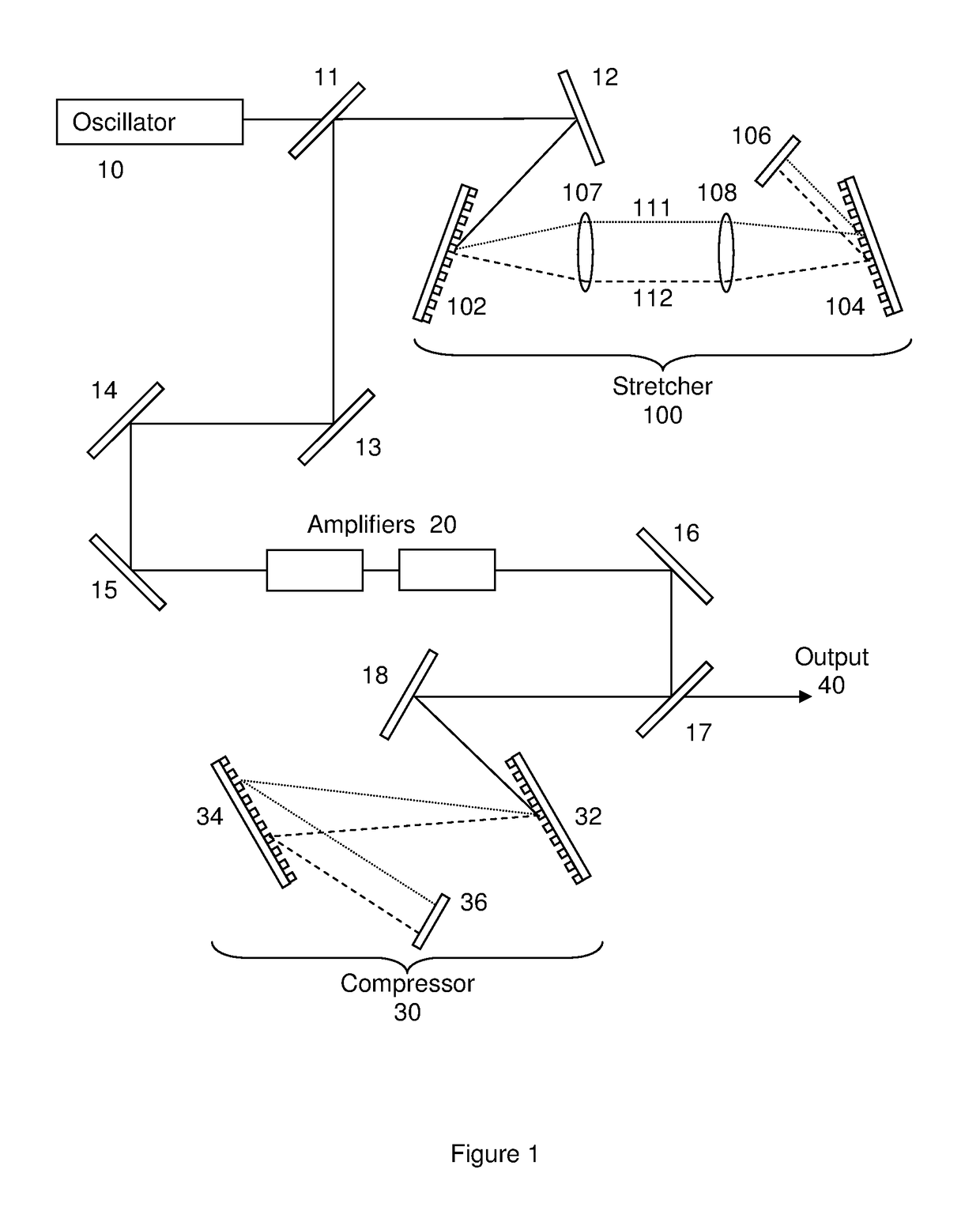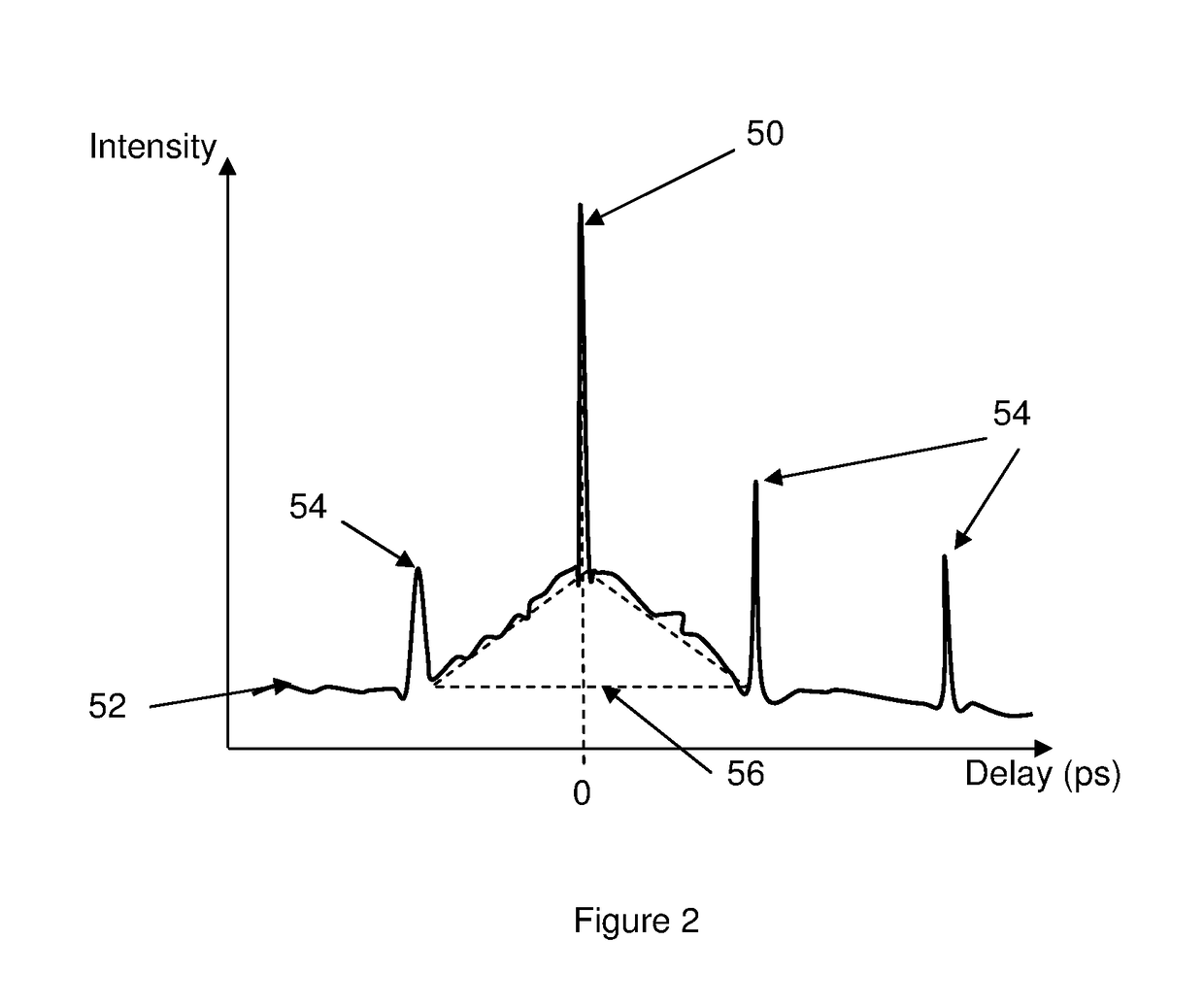High power laser with chirped pulse amplification
a high-power laser and pulse technology, applied in the direction of laser arrangement, laser details, electrical equipment, etc., can solve the problems of difficult measurement of the contrast of ultra-high intensity pulses, damage or even destruction, etc., and achieve the effect of high peak intensity
- Summary
- Abstract
- Description
- Claims
- Application Information
AI Technical Summary
Benefits of technology
Problems solved by technology
Method used
Image
Examples
Embodiment Construction
[0059]FIG. 1 is a schematic diagram of a high power chirped pulse amplification (CPA) laser system. The system consists of an oscillator 10, a pulse stretcher 100, an amplifier or multiple amplifiers 20 in a chain and a compressor 30. The oscillator provides a series of seed pulses for amplification. In the example of FIG. 1 the pulses are directed past mirror 11 and reflected at mirror 12 towards the stretcher 100. The mirror 11 is of limited size and at first pass from the oscillator to mirror 12, the pulses pass above or to the side of mirror 11 bypassing it. Alternatively, the mirror 11 may be a partially reflecting mirror such as a semi-silvered mirror. The stretcher comprises a pair of diffraction gratings 102 and 104, a pair of lenses 107 and 108, and back mirror 106. Mirror 12 directs the pulses at the first diffraction grating 102. The diffraction grating diffracts the input pulse according to their wavelength spreading the pulse such that the different wavelengths diverge ...
PUM
 Login to View More
Login to View More Abstract
Description
Claims
Application Information
 Login to View More
Login to View More - R&D
- Intellectual Property
- Life Sciences
- Materials
- Tech Scout
- Unparalleled Data Quality
- Higher Quality Content
- 60% Fewer Hallucinations
Browse by: Latest US Patents, China's latest patents, Technical Efficacy Thesaurus, Application Domain, Technology Topic, Popular Technical Reports.
© 2025 PatSnap. All rights reserved.Legal|Privacy policy|Modern Slavery Act Transparency Statement|Sitemap|About US| Contact US: help@patsnap.com



